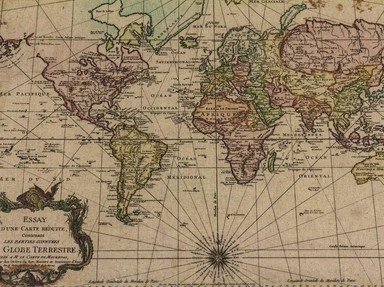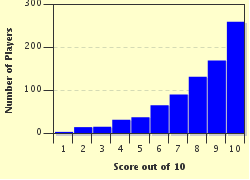Quiz Answer Key and Fun Facts
1. In 2005, the problem wasn't that this nation changed its name; instead, it changed its capital city, from Yangon to the much-less pronounceable Naypyidaw. Oh no, that ruins everything! Back to the drawing board, I guess, to move that little star an inch north. Which Asian nation, led by a military junta until 2011, is it?
2. I could hardly sleep after seeing how arrogant the island country of Kiribati was on January 1, 1995. I know it was just a tourist-y ploy for more people to come there to see the dawn of a new millennium, but its measly action just about ruins everything! Which of these lines did I have to fix on my map to account for Kiribati's actions?
3. Don't even get me started on countries that change about two vowels in the names of their cities, just so that I have more work in front of me. Do you think it's fair to change names of cities that aren't even CAPITALS, but are big enough to be on any world map, just because you're offended by decades of British colonization? Maybe I'm just biased. Which nation's cities changed their names from Bombay to Mumbai and Calcutta to Kolkata around the turn of the millennium?
4. I'm firmly of the opinion that areas shouldn't be allowed to completely mess up my maps unless they've been established for at least 60 years, which one dependency in the Caribbean certainly wasn't. After its creation in 1954, it decided in 2010 that dependency simply wasn't good enough, so Curacao and Saint Maarten became new constituent countries, in the model of Aruba's 1986 action. That ruins everything! To which European country and former colonial power did that group in the Lesser Antilles belong?
5. I never, ever get fan mail from people who buy my maps. The only letters I get are from fervent nationalists saying "So-and-so's not a country! How could you do that?" You know, guys, I didn't enjoy reprinting thousands of maps in 2008 when a Balkan country declared itself independent, so don't glorify me as a Serbia-hater or whatever. Which country's proclamation was met with mixed reviews from the world public?
6. In January 2007, an Asian nation was pretentious enough to change its name from a "Kingdom" to a "State," since having a king for two hundred years or so simply wasn't acceptable. Well, after a 2001 massacre killed nine members of the royal family, I understand why King Gyanendra would surrender power in 2006, but why do I have to make all these new maps just to change one measly little word? Which mountainous Asian nation was led by a Communist Party soon after it became a republic in 2008?
7. There are some years that I just try to put out of my memory. One was a year in which at least a dozen countries declared independence. Just think about those long, sleepless nights, phoning correspondents and printing map after map, for the next to become outdated! The emergence of Turkmenistan, Tajikistan, Georgia, Latvia, Armenia, and all those other former SSRs ruined my life for months. In which year did the map change that dramatically?
8. Look, I can accept changing a country's name once, maybe even twice. What really gets my goat is changing it back to virtually the same thing that we started with, and getting it all confused with a similarly-named country to the northwest. In 1997, an African country once known under the name of Zaire changed its name after its long-time leader Mobutu Sese Seko was ousted. What is the modern name of that country, which feels a pathological need to ruin everything?
9. One former country constantly breaks up piece-by-piece, so every few years or so, I have to readjust the maps to get it right. In 2003, the last piece of this nation dissolved to form Serbia and Montenegro, while Croatia, Macedonia, and Bosnia and Herzegovina broke apart from it in the 90s. Don't mind the humble mapmaker, who doesn't get mad when this ruins everything! Which former socialist state, an Eastern European nation led by Josip Tito during the Cold War, is it?
10. A simple little referendum in an African country in 2011 made me give up; not only did it force me to recolor the entire area on a political map, but then we had a whole new "largest country on the continent". Everyone's going to have to edit their trivia almanacs and encyclopedias- I'll be laughing at your misery from the unemployment line. Which country's 2011 secession led to Algeria becoming the largest country in Africa?
Source: Author
adams627
This quiz was reviewed by FunTrivia editor
Pagiedamon before going online.
Any errors found in FunTrivia content are routinely corrected through our feedback system.

